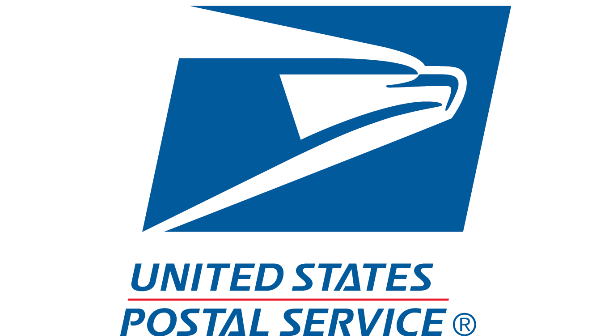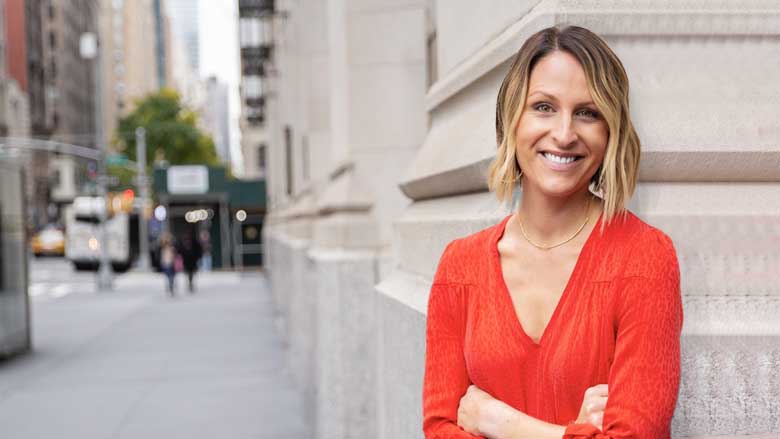June 2, 2021
Orum is creating financial infrastructure allowing for real-time money movement in the U.S. In its own words, “Orum’s API-based products will give enterprise customers unique funds-availability modeling, empowering them with the information required to shift to real-time payments, and enable access to real-time payment rails without necessitating bank integration.” Part one of the interview with founder and CEO Stephany Kirkpatrick is here: https://bit.ly/34jkyLv

Q. Stephany, who are your ideal customers?
A. We want to be everywhere that ACH is. In terms of our go-to-market, we love fintechs because they have the hardest time with a system like this. They’re trying to meet their customers in a unique spot. If you look at the investment platforms today, the idea that it’s going to take me five days to move my money from Bank of America to my investment account — not the bank’s fault and not Fidelity’s fault, it’s just how the system was built, but I suffer the consequences of not being in the market at the right time.
How can we fix that? Well, fintechs today have said we’re going to lose money doing it but we’re going to credit some money instantly, i.e., “It’s rules-based and up to $500, so everyone can have access instantly.” The flaw is that they have no concept of how much risk is in each transaction; the beauty is that people are flocking to put money into the market at a time when it makes sense for them.
How do we come in with Foresight and help not just a few platforms but everybody who is moving money make it happen in real time? I think the fintechs are tackling the problem differently. They’re certainly more focused on growth and less focused on risk. It gives us a great opportunity to address both of those things together.
But Foresight and Momentum together are designed to be used by anyone moving money. If you’re a mortgage servicer processing automatic payments, wouldn’t you want to know the best day to draw down that payment and if there’s a high probability of NSF? Wouldn’t you want to keep your delinquency rate low and protect the customer in a different capacity?
If you are selling a financial product, wouldn’t you love to know if that financial product is going to be paid for? Like life insurance. There are so many things that get paid for by ACH. Let’s say you’re an auto insurance customer who’s had an accident and Allstate owes you a payment. Wouldn’t it be amazing if the payout arrived in real time?
We really don’t think it has to be banks or it has to be fintechs. We think about where we can create the highest value opportunity for money to move in real time that meets customers where they are.
Q. If one banking function moves to real time, will banks have to ensure that all related functions update in real-time? Is that going to be a big undertaking for some?
A. If you look at real-time payments, today from a send-and-receive perspective maybe 20, 25 banks that can do both, and 100, maybe 120 can receive. Adoption is slow for two reasons. First, real-time risk management is a very different animal than a three- or five-day system, which is what we are used to. There’s complexity there, which is why Foresight contemplates real-time risk management. And second, you are correct that systems for reconciliation, for settlement, for ledgering, weren’t designed to be real-time. They don’t work at night and on weekends.
We think it’s our job to reconcile and meet the banks where they are. Momentum will include real-time ledgering and real-time settlement and reconciliation tools. We can reflect capabilities and match where our customers and partners are.
We are core-agnostic. We can work with any system. We marry to batch-based systems when they come online. We will do all the real-time ledgering (which we’ve built in-house) and all of the reconciliation in a way that runs overnight and on weekends and when batch-based systems come online on Monday, we marry and reconcile those two things together.
We felt it was really important to get real-time payments to be adopted to be able to bring to market as part of a full-scope solution, tools that require very little change. But that doesn’t mean they require no change. The degree of readiness on other fronts is something we help consult on, but we’re really here to make sure implementations are straight forward and very friendly to our bank partners, so they can quickly get to a place where real time is possible.
Q. How is Orum regulated?
I grew up in regulated industry. I’m a Certified Financial Planner. I built a digital registered investment advisory business for LearnVest. I worked at Northwestern Mutual for more than three years after our acquisition. I’ve pretty much spent my entire career thinking about regulatory and compliance issues.
The way we are regulated today is very clear. We are not a consumer creditor or lender, so we don’t have adverse action requirements to contend with. We are an intelligence platform, first and foremost.
We are working with some fantastic financial institutions to help move money on behalf of our subscribers. We recognize that in order to fully realize what we are looking to solve long term, we may need to get licensed as a money transmitter. We are sprinting to move quickly on this front at both the Federal and State levels.
As a data and intelligence platform first, much of what we do is not currently subject to substantial financial regulation. Regardless, because I grew up in a regulated setting, compliance is core to Orum’s DNA and a big part of how we go about super-serving banks and financial institutions. We sprinted on information security and SOC audits ahead of when we’d need it. Unlike many fast-moving startups, we want to operate in a way that ensures great GDPR and privacy coverage and give full acknowledgement to how each regulator or governing body would want to think about risk.
Q. Access to data is frequently a stumbling block for fintech startups. Training machine learning models to predict when funds are available and flag fraud must have required a great deal of relevant consumer data. Where did you turn to access that data before clients came on board?
A. The team that runs our data science initiative —we have an incredible SVP of machine learning, data science, and engineering, who came over from Facebook, and a brilliant head of data science who came from Stash, was at OnDeck Capital and SunGard previously — so these guys have deep experience and they’ve faced the problem before. There’s a cold-start problem, how do we go forward?
What we did is we said before we go forward, before we build anything, before we build the APIs, we have to get the modeling right. We spent more than six months thinking about data acquisition, data partnerships, model training and model performance before we started putting together the pieces that would make it possible.
The way we thought about it is if you design the system properly, if you make data exchange — again de-identified, non-PII, aggregated (can’t be disaggregated or re-identified) — if you do it in a way that creates a rising tide that lifts all boats, you will have people who want to participate.
It’s akin to saying, “Hey, Chime! Hey, Robinhood! (to use two massive fintechs as examples, not to say they’re customers.) What if you each had the benefit of seeing the other’s fraud patterns without knowing where it’s coming from? And we could let each of you know when see fast-moving fraud patterns that you could both prevent? Would that be valuable to you?” And the answer is fundamentally yes.
That’s how we designed the system. Everybody who uses our product participates, and we’re on track to see upwards of five billion unique data points in our models by the end of this year.
So it’s doable if you are very focused on which data matter, and if you look at ways to achieve results with your early partners that create solutions that work for everybody else. Hand selecting our early beta partners and our early data-sharing partners is what allowed us to put in the up-front work to get models that are performing.
Important in our case is not just the vastness of the data, but the guarantee. Our product comes with a guarantee that it will perform, and we financially backstop every partner that works with us. It’s a brand-new product, right? It sounds great but will it work for me? No partner should have to take the risk. We believe so whole-heartedly in it that we put our money to work and say if we’re out of performance on anything we’ve guaranteed, we’ll pay you back for that. We are thoughtful about making sure that by trying to manage risk we don’t inadvertently introduce more risk to the system.
Q. Are you concerned about competition from central-bank-sponsored digital currencies? Or do they just represent another set of rails for Momentum to opt for?
A. I think they’re another set of rails.
Now, I do think that the way real-time gross settlement has evolved, in the way the RTP, and FedNow, and even the way that blockchain settlement is structured, is fundamentally different and better. But I also think it takes decades to achieve mass-scale adoption. Even then, in the U.S. we are unlikely to be completely off of old systems. Part of that is really the cost of the conversion. Many banks are community banks supported by maybe one full-time IT person. Most of their tech support comes from large core processors and they’re not on the bleeding edge of financial innovation. They don’t have $5 million or $50 million to upgrade to this next, new way of working.
The way we think about it, Momentum is your unlock to future proofing. You hook up, and if a new set of rails becomes available, there’s a good chance we’ll include it. We’ll optimize for when it makes sense to use it, and you’ll never have to spend engineering resources or operations resources thinking about those questions.
We’re really supportive. I love where digital currencies are going and I think there’s going to be continued innovation. I don’t think that’s going to be the last big thing we’re going to see. It just happens to be kind of the hot thing at the moment.
Q. As a consumer and as a small business owner, I like it when money I’m owed hits my account as collected funds immediately. But when money is going out, I prefer to slow things down. It’s just good, basic cash management. Someday, interest rates will again be non-trivial, and interest earned on float will impact monthly budgets. If I want the upside of RTP, do I have to take the downside, too? (Should consumers have their own Momentum service?)
A. Such an interesting question. I don’t think consumers need their own Momentum service because, ultimately, we’ll hook up to every part of the financial system, and the idea that money should move in real time and smartly and in a way that’s optimized for you shouldn’t be something that you can only get from Bank A or Bank B. It should become ubiquitous.
When you think about the small business question, I, too, would like to have the money sitting in my account and earning more. But wouldn’t we prefer that goods and services were exchanged in a just-in-time way, so that we could remove the friction from the supply chain? The value realization that you’re able to afford to your customers as a small business increases because you’re not dealing with net-30 or net-45 terms on each and every thing that you have to do.
If you, as an employer, were paying employees not once a week or once a month but every day, you would care a lot more about the fluidity of cashflow and ultimately realize that the way you participate in the upside of real-time payments is by seeing everything increase in speed.
Q. What additional new products or new capabilities should we expect to see from Orum in 2021?
A. We’re pretty busy doing two things, though most startups wisely choose to do only one!
You’ll see more from us on Momentum, and we’ll be excited to announce some incredible partnerships with companies that are going to be moving money not just for the sake of the customer requesting it but really thinking about what we call self-driving money, which is to say you’ve gotten some advice, you have some guidance on how that money should move. Our partners are going to make it real time through our system. So more to come on that.
Many of our ideas revolve around the notion that as a small business owner or as a consumer, 99% of your financial life should be fully optimized, and most of your money movement and money management should be done daily, not monthly and not quarterly. We’ll be looking at all of the ways we can build on the dataset that we have today, which although de-identified, says the following: how much money leaves a bank account after a direct deposit, what time the transaction takes place, on what day, where it goes, and for what purpose. From that, we can create thoughtful tools for our enterprise partners to help optimize where Americans’ money should be going. The American wallet should be fully digital.
How do we get there? I don’t mean Apple Pay, or PayPal’s digital wallet. I mean literally having money flow like water. If I charge more than $500 this week to my credit card, start automatic repayment of $10 a day in the background. At the end of every Uber ride, 50¢ should go to my Toyota lease, directly. Anything that can be done to optimize cash management for American households should be done and should be done particularly to help those with very little get ahead in terms of saving, investing, and paying off debt in a way that, if you leave it all until the end of the month, will almost never get done.
Q. Do you intend to build all these capabilities yourselves? If Orum’s mission is building the infrastructure for a friction-fee financial system, are you encouraging other entrepreneurs to build new products and services on top of Orum’s capabilities? If so, what kind of things are you hoping to see developed?
A. They’ll build on top of our infrastructure. Orum will probably never be a household name, at least from the consumer’s perspective. But we’ll create the orchestration layers, the advice tools, the guidance, and the mechanisms for our partners to build these new products. The sky’s the limit! There is so much you could do in terms of financial automation. We’re only at the very beginning.
Q. Is there a need for Orum outside the U.S.?
A. I do think that as you look globally, there is massive opportunity. However, I received good advice from John Schlifske, the CEO of Northwestern Mutual. I often heard people ask him why they didn’t sell life insurance internationally. And he said that until every American household had a policy with Northwestern Mutual, he had no right to expand internationally.
It reminds me that as a startup, as a fast-moving high-growth company with a $62 trillion outdated system right in front of us, international expansion will not be a focus for us immediately. But there is big potential because, just as in the U.S., globally there are many, many different ways to move money, and it is complex. The likes of Transferwise and others have thought quite a bit about this and maybe the time will come for us to do it as well. We certainly keep an eye on Ripple and Rapyd and others. There’s all kinds of innovation happening on a global scale and we appreciate that there’s opportunity for us as well. But right now, we’re deeply focused on what we can do here at home.
When you look at the global scale of this problem, it’s clear that it will not be a winner-takes-all market, just as with the card-networks or among banks you haven’t seen a single winner either, though there is usually a number one. In this case, it will be Orum. We’re actually excited to see how competition is going to form. All good ideas end up having competition, which will just make us fight harder and drive us to be even better.
Q. What are your thoughts on accelerator programs for early-stage B2B fintechs?
A. It really is founder dependent. Have you been a founder before, have you run a company before, have you been a GM? What kind of experience do you have? How big is your network?
Accelerator programs can be terrific. Just give careful thought to what you’re gaining and to what you are giving up, which can be a fairly substantial portion of your equity. But what you gain can make the difference between succeeding and not succeeding. For the right founder, addressing the right problem, they can be great.
Q. I usually suggest that people look only at the accelerators that don’t take equity. There’s MassChallenge FinTech, there’s one in Paris, there’s one in New York. Those are the ones you want to consider before you give up 6% or 7%.
A. I think that’s right. We participated in Lowenstein’s VentureCrush program in our very early days and huge thanks to the team for enabling that for us. What you learn is that you’re not alone. You’re not the first person to ask the question about product-market fit or pricing or hiring, or any other thing. It puts you in a room with people at the same stage. Done right, it forces you to get the point where you have a demo, where you have a pitch. You get in front of people and practice a lot. For some, that is really meaningful.
While I’m a first-time founder, it’s not the first time I’ve been in an early-stage company or run a line of business. Founding a company at almost 40 is very different because you already have a lot more scraped knees and elbows and experience than you have at 22.
Q. How have you gone about building a culture at a brand-new firm during a time when people can’t meet?
A. What I think about probably more than anything else is the company culture and the team coming together. There are 45 of us today in 11 different states. We are completely remote and remote first will be our strategy. There were four of us when quarantine started and so it just made sense to build it this way. I have executives who report to me that I’ve never met. Every single investor who’s put money in Orum, I’ve never met.
It’s allowing us to create this really interesting, super-diverse team. We are attracting a profile that looks really different than most tech companies. More than 50% of the company is female, more than 50% is non-white. Tons and tons are parents, and that feels unique. You know, as a parent you look at a startup and say, “I can’t go to a Series A company — I have two kids at home.” But actually, you can.
I was having a board meeting two weeks ago and a board member’s daughter climbed into his lap. We all got to say hi! How humanizing is that? It’s amazing.
We are definitely going to reroute what appears to be savings on office space into a more significant investment in our human capital and we are thinking about how this becomes a unique place to work because it’s remote and what that unlocks. We are thinking about creating really big, intimate, interesting, sort of life-changing experiential events where our teams get together to create connections and see vulnerability in each other in ways that are just different than the way you do it day-to-day in the office.
We hired a head of people at 20 employees which is really early. She is building a talent acquisition team, a learning and development team, launching our DEI council. She’s been empowering us to do things early that support the vast diversity we have and that support things like 90-day onboarding and transparency in our compensation philosophy.
We’re learning as we go, watching other companies that have been remote forever. It’s a chance to pioneer and to hire incredible talent from places like Cincinnati or Florida that weren’t tech centers and might never be big tech centers but have incredible people who care about this problem and have the skills and backgrounds to solve it. You can be part of a team where it’s okay to relocate every year because you don’t have to go to an office or it’s okay to spend six months closer to your family because you’re going to have a newborn.
So, super excited about the way we’ve done this because as a parent of two kids (five and three), I get to see them way more than I ever could have as a founder before. I don’t think there’s a wrong answer — but I think we’re doing this right for Orum.
Q. You went from working at a buzzy fintech startup that was changing the world to a giant mutual insurance company that was founded before the U.S. civil war to a buzzy fintech startup that is changing the world. Do you have whiplash? What’s that been like?
A. In between Northwestern Mutual and Orum I also went to SoulCycle, so I’ve done a lot of things. I’ve gotten to experience everything I wanted before I became a founder. And most important, I got to do hard things. I don’t think building a startup is all up and to the right. Frankly, there are lots of hard things that no one tells you about and you live them every day.
The whiplash thing is interesting. I’d say it’s more like an irrational addiction to the emotion of everyday waking up and thinking, “I’m going to change the world.” You have to have an irrational conviction that it can be done and a belief in the impossible.
Actually, with Northwestern Mutual, going through that acquisition, sitting inside a Fortune 100 company, it fundamentally changed me. It was the most valuable thing that could have happened after having been at a startup because I saw everything on the other side. I understood that Northwestern Mutual doesn’t lack the desire to be innovative. They’re a hugely innovative company but they’re held back, just like banks and everybody else, by infrastructure. My obsession with infrastructure really started there. Orum would look very different had I not had the opportunity to understand that old systems are what really hold us back and that there are ways to make them better, brick by brick.
This big company taught me structure and showed me what executive leadership can really look like. It was an amazing experience.
Q. Are you hiring?
A. Orum is always hiring! We are specifically always looking for machine learning engineers and data scientists and we are currently looking for some incredible folks to join our business team. Check out https://apply.workable.com/orum/ and you’ll see all the roles we have open.
# # #



